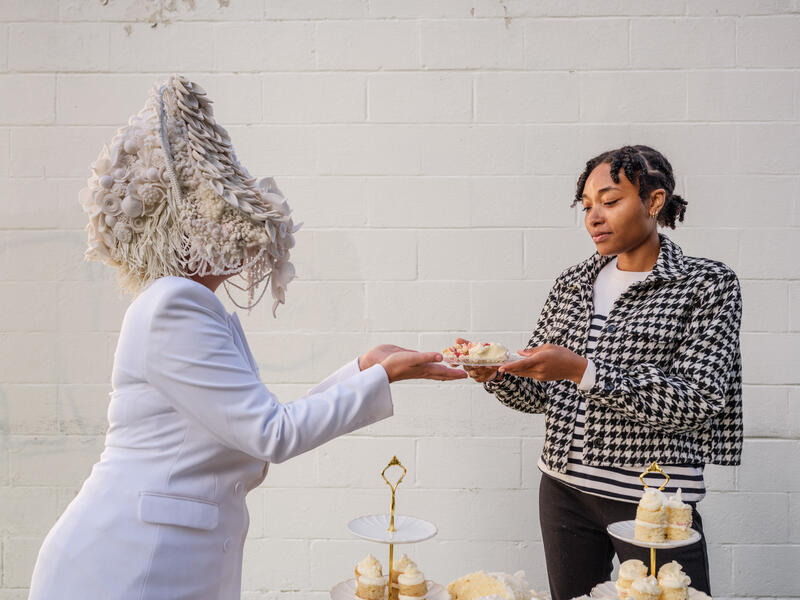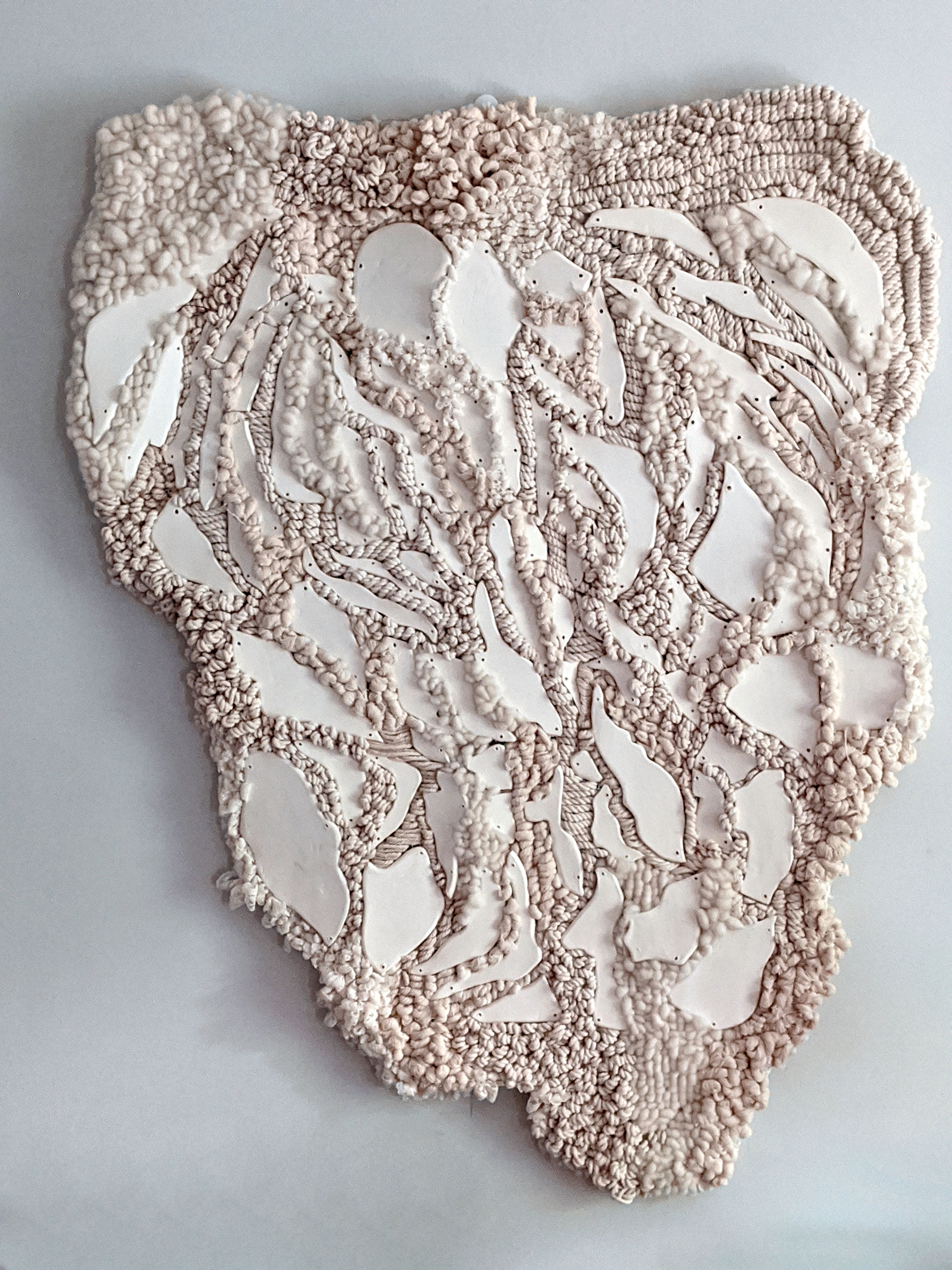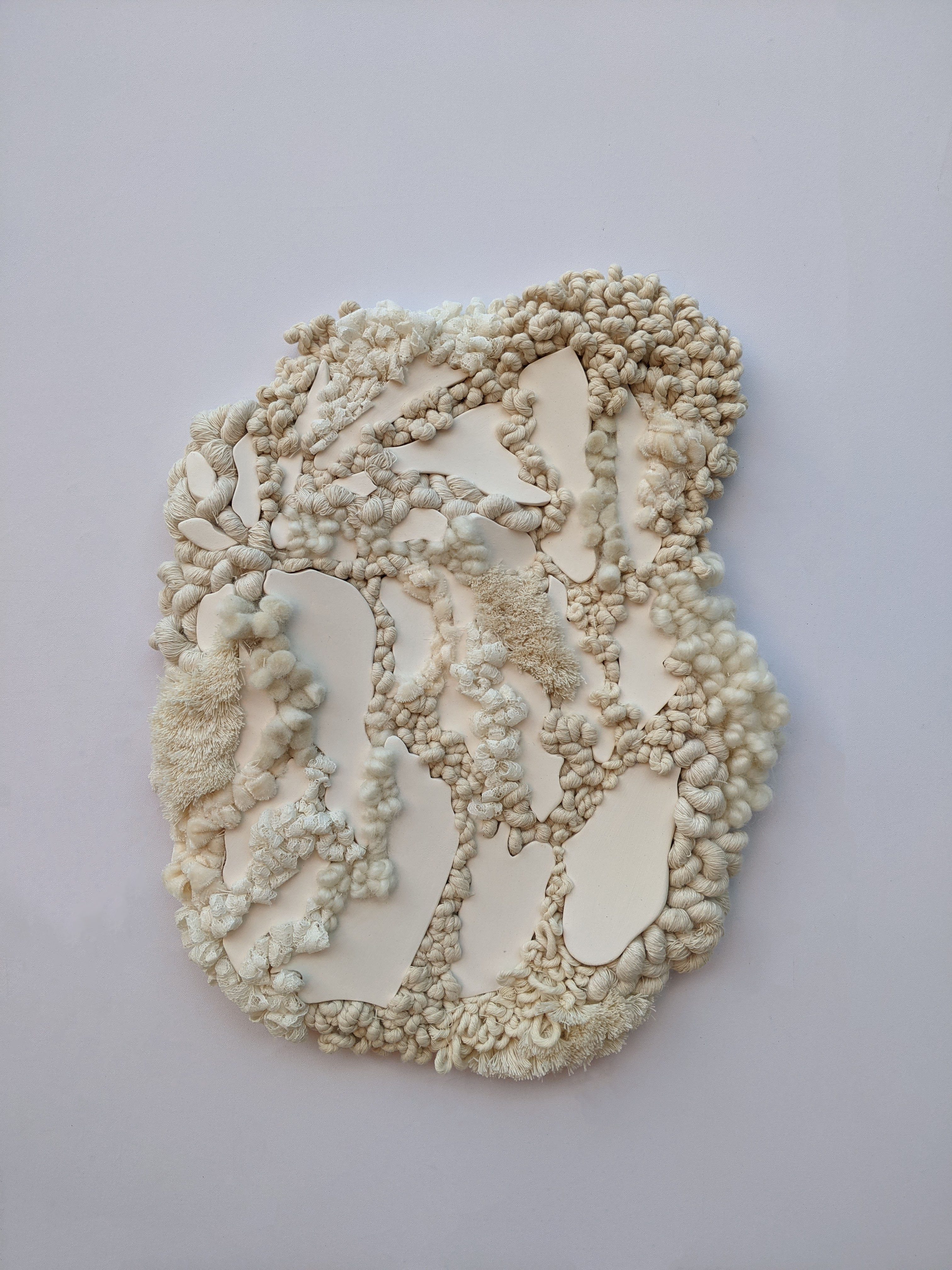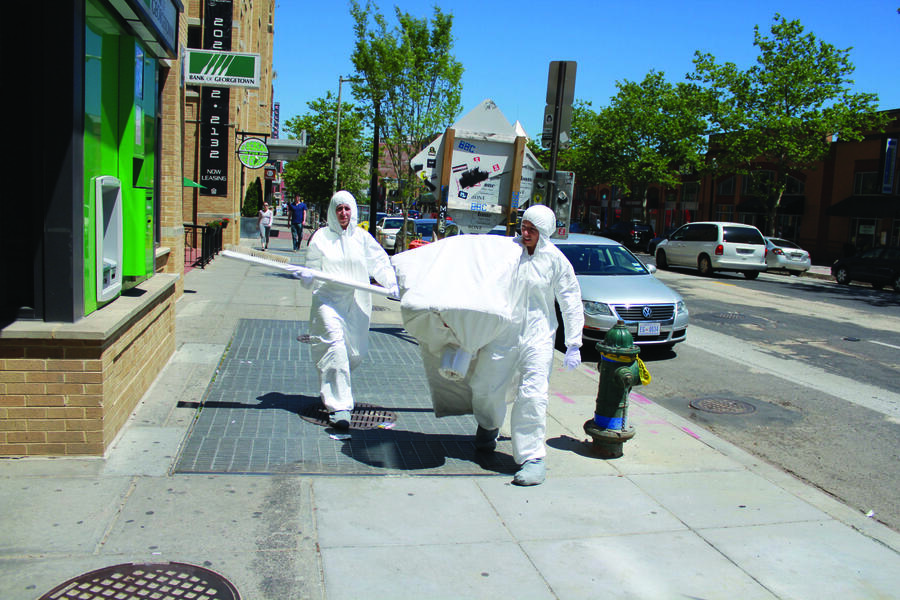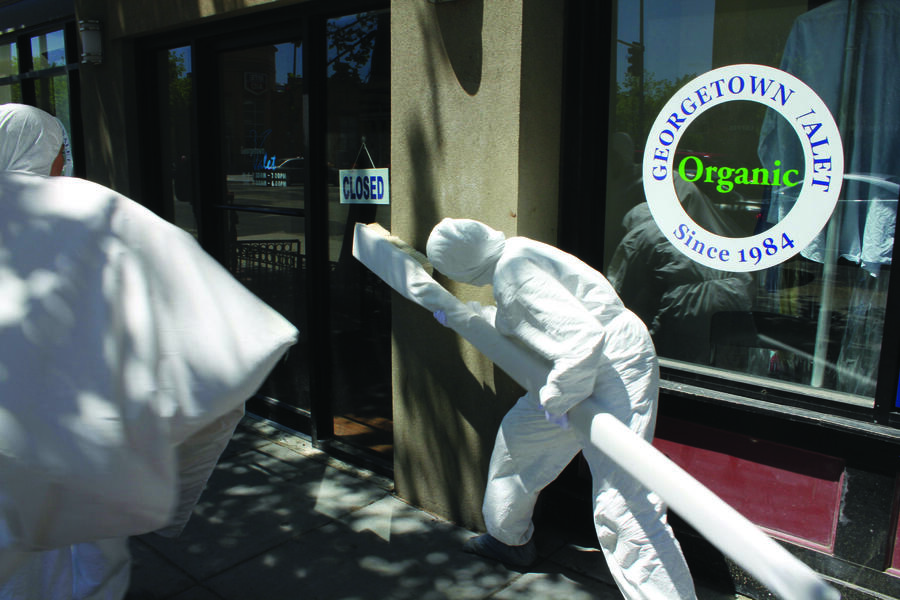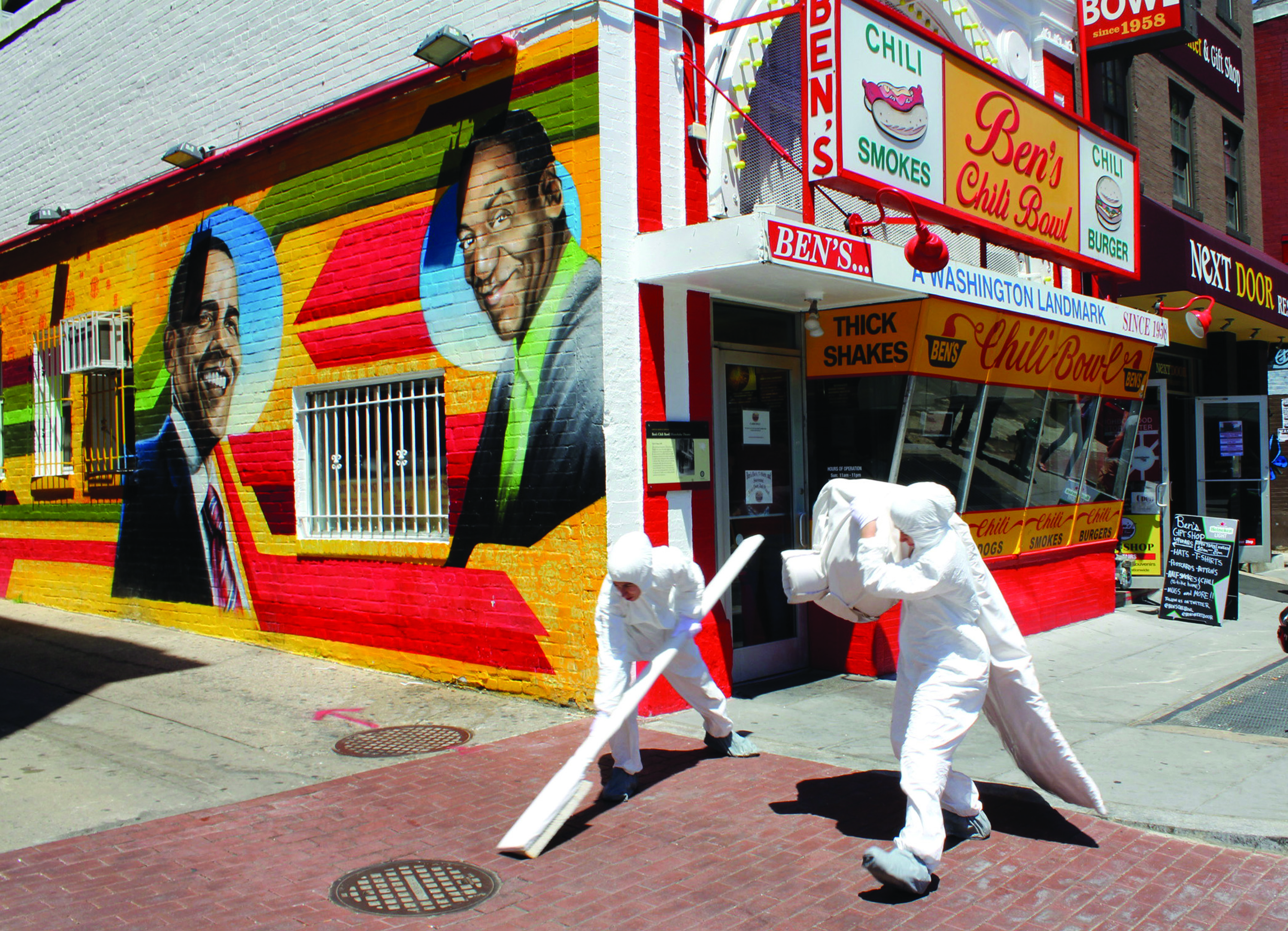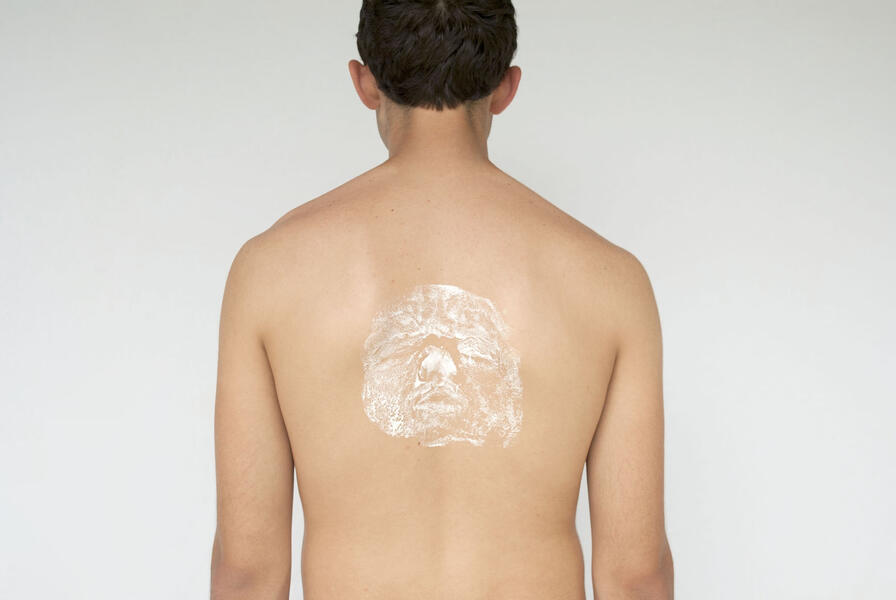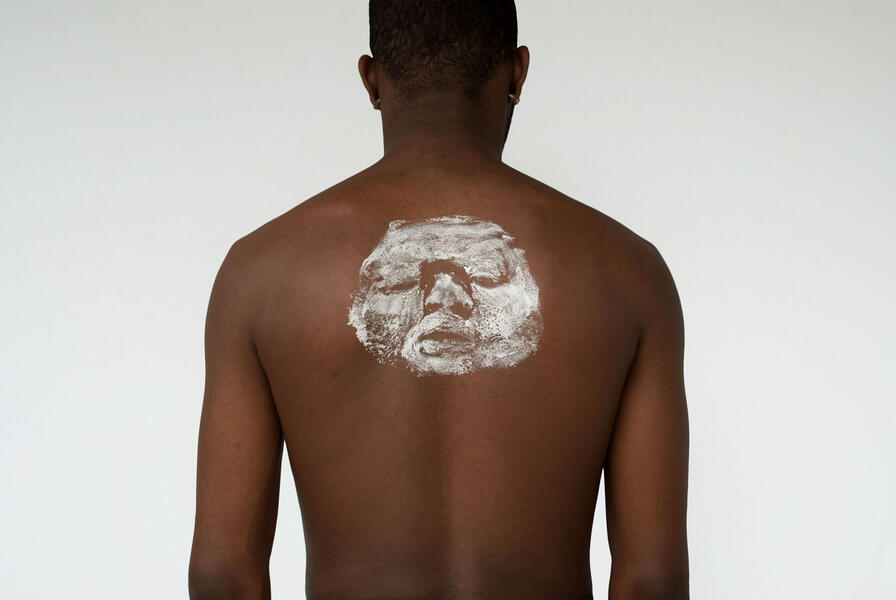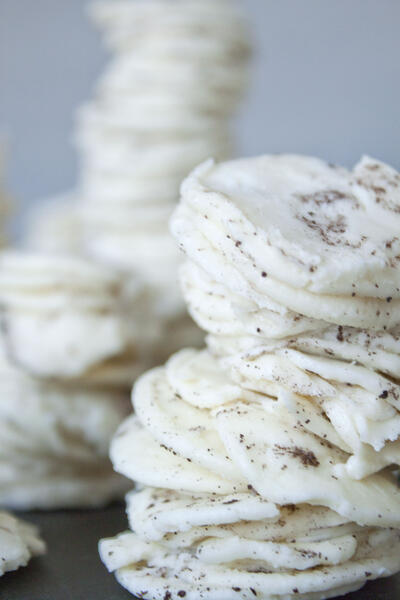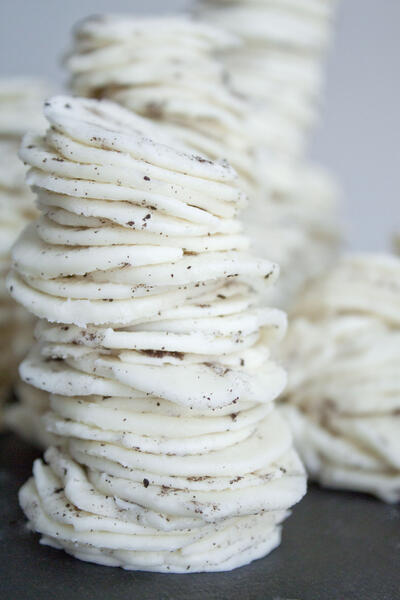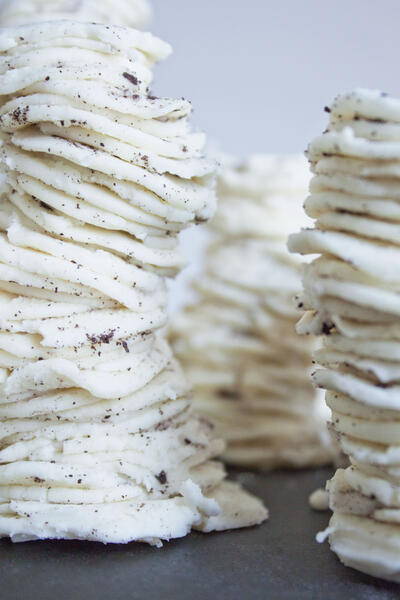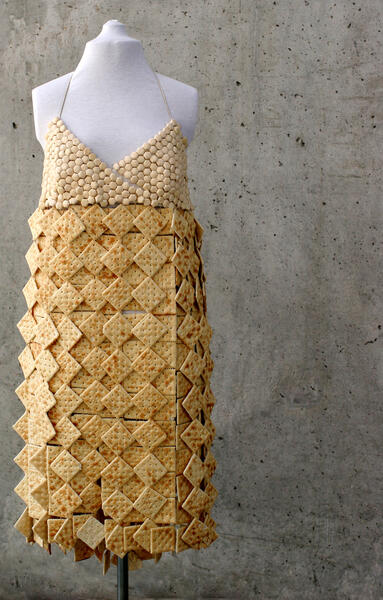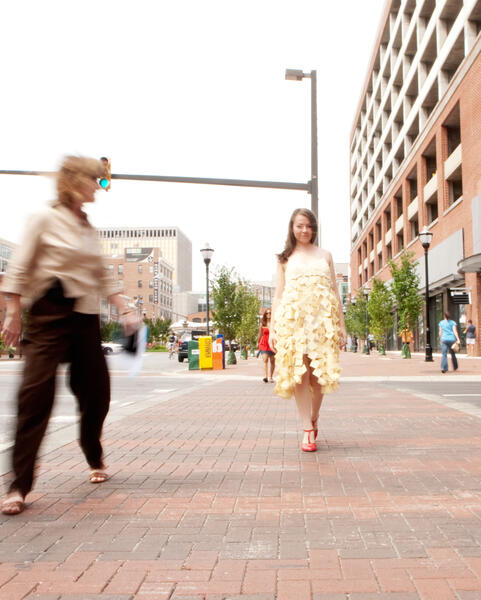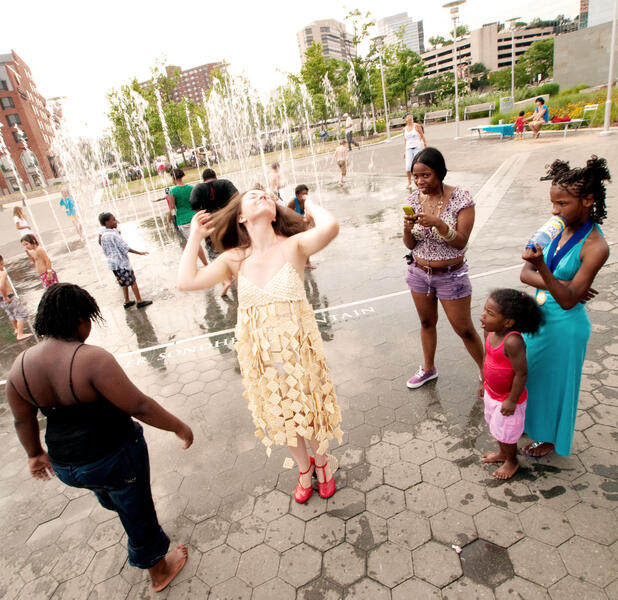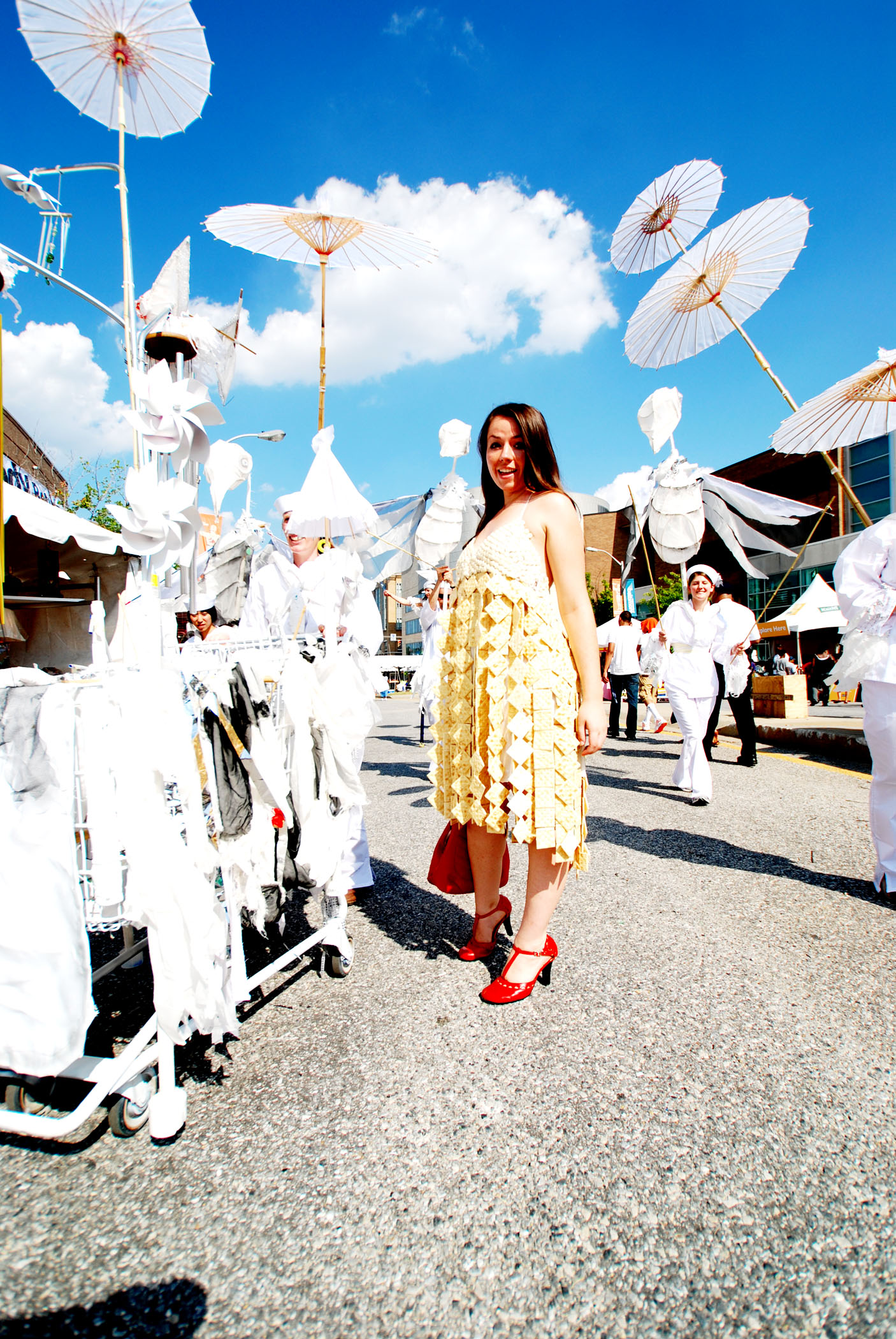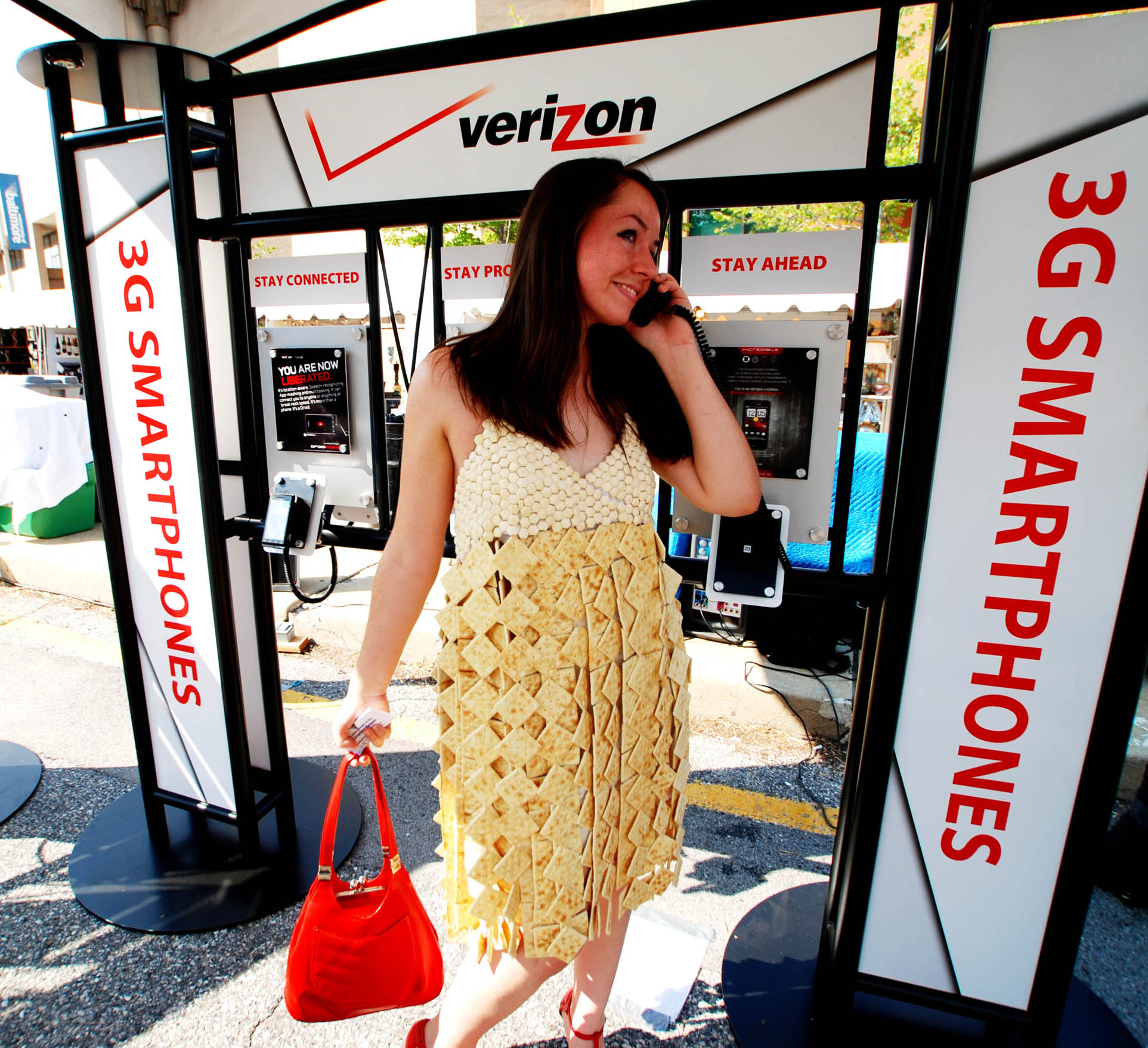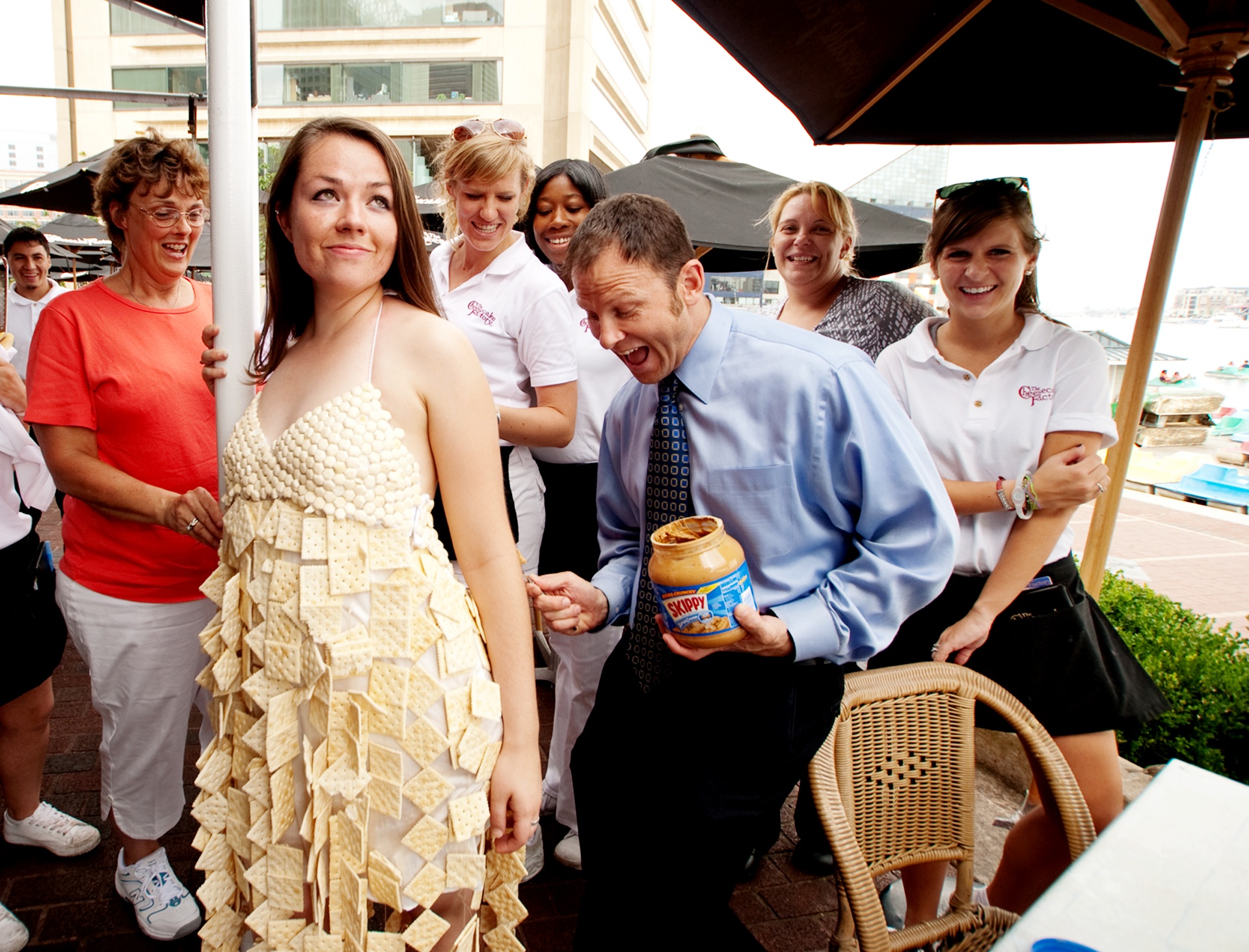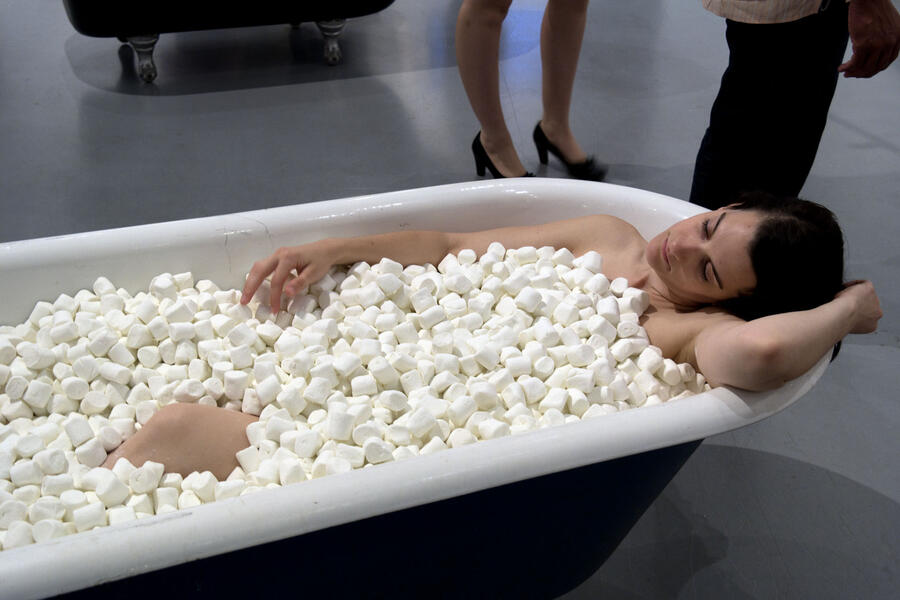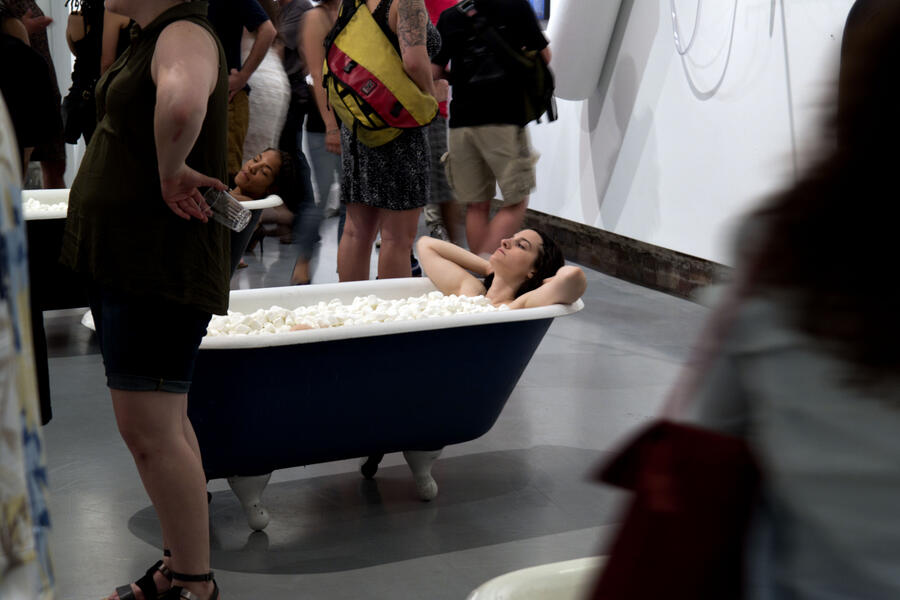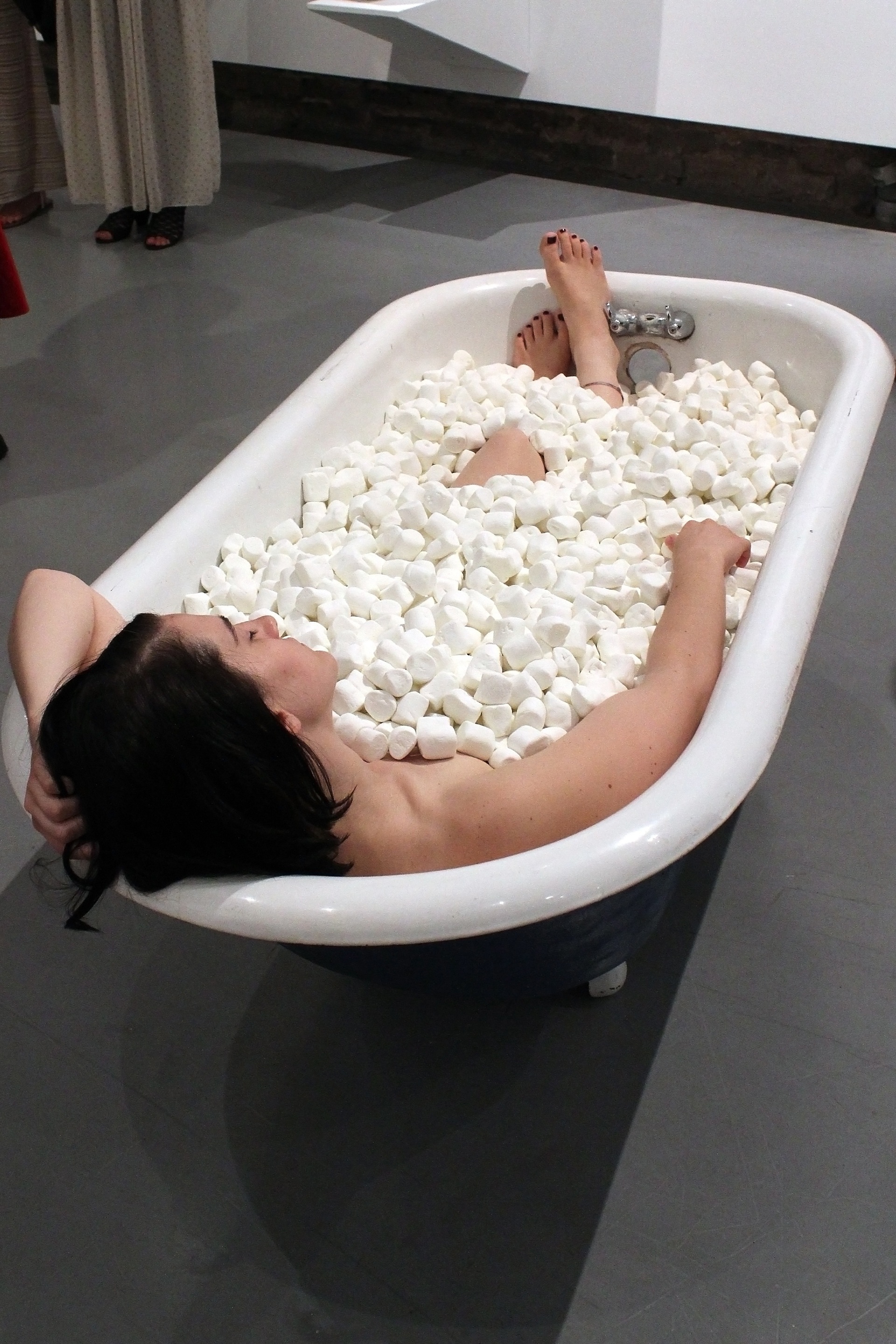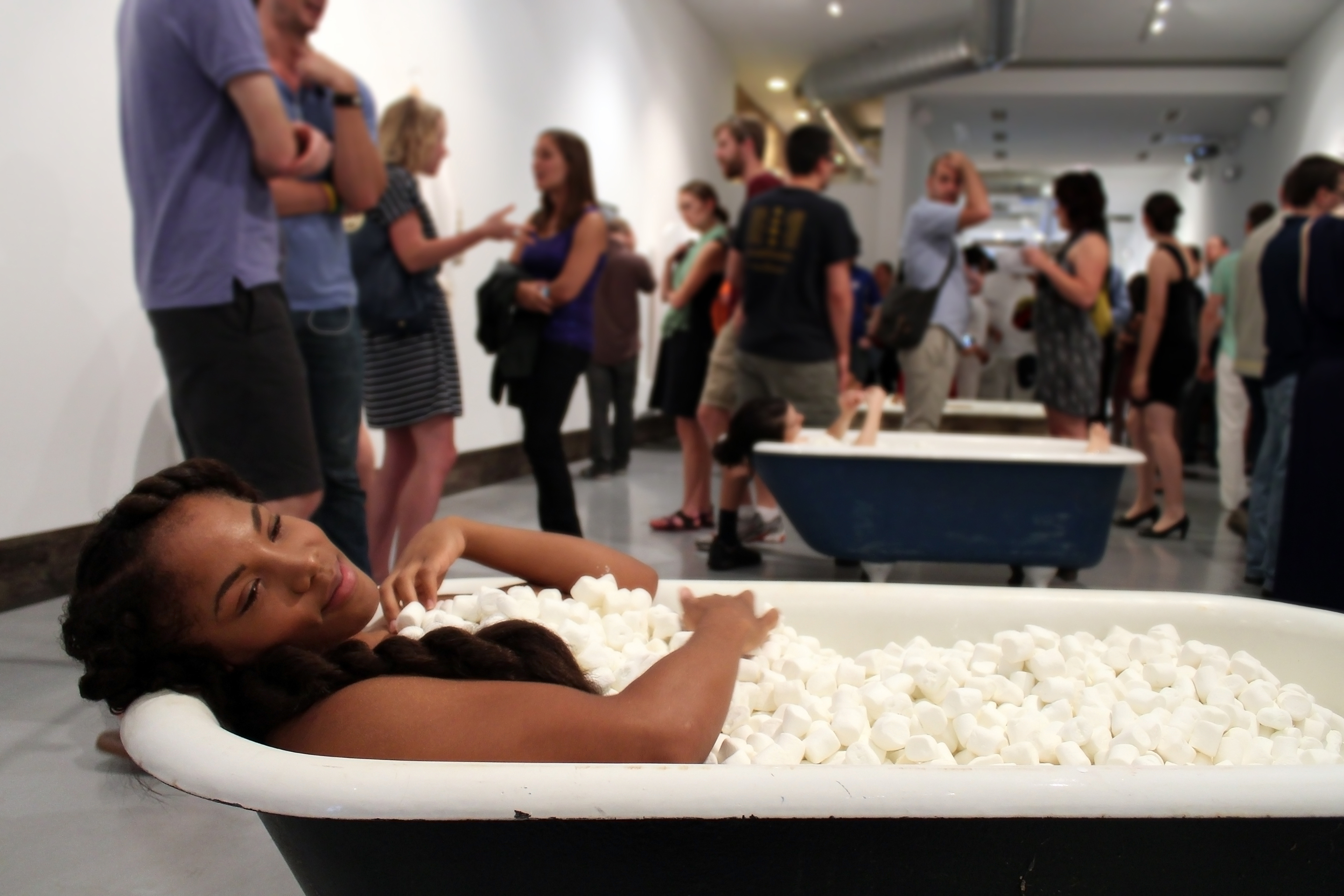About Nora
Nora Howell is a fiber and performance-based sculpture artist and art administrator living in Baltimore, Maryland. In her art, Nora uses a mix of ceramics and soft sculpture to develop a visual language to illuminate and stimulate dialogue around themes of motherhood, racial identity, community, power, and privilege. She is a Hamiltonian Fellowship Alumni, 2018 Daily Record 40 under 40 VIP awardee, and Sondheim Prize 2014 semi-finalist.
Let Them Eat Cake
The “Let Them Eat Cake” is an art performance aimed at illuminating the dissonance and mutual complicity that occurs when White-led nonprofits attempt to serve BIPOC communities. The piece highlights the performer's privilege, and by metaphor white-led nonprofits, which blinds her from being able to commune or even support the very communities she claims to care about. The piece also invites the participants to reflect on their own conflicting and messy relationships with people and institutions that both provide needed services and ignore their dignity.
-
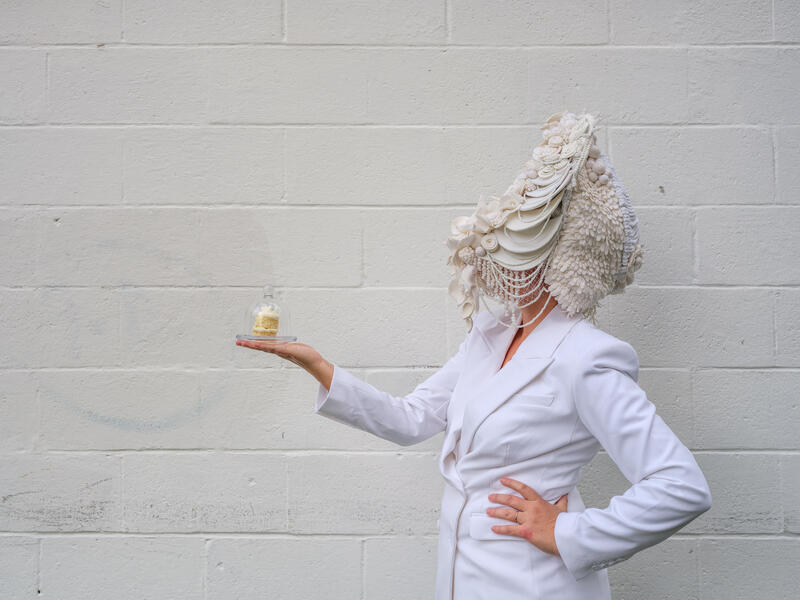 Let Them Eat Cake
Let Them Eat CakeLet Them Eat Cake - Live Performance Documentation (photographed by Nate Larson)
-
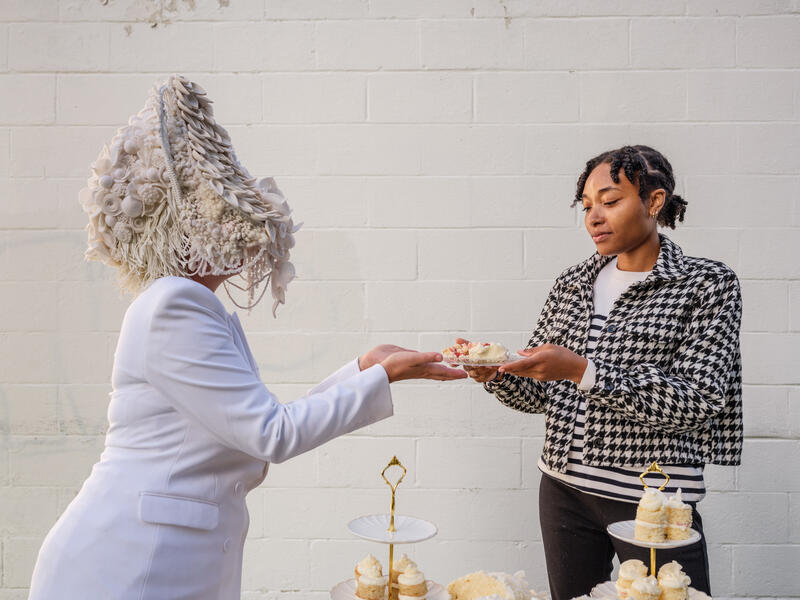 Let Them Eat Cake (2)
Let Them Eat Cake (2)Let Them Eat Cake - Live Performance Documentation (photographed by Nate Larson)
-
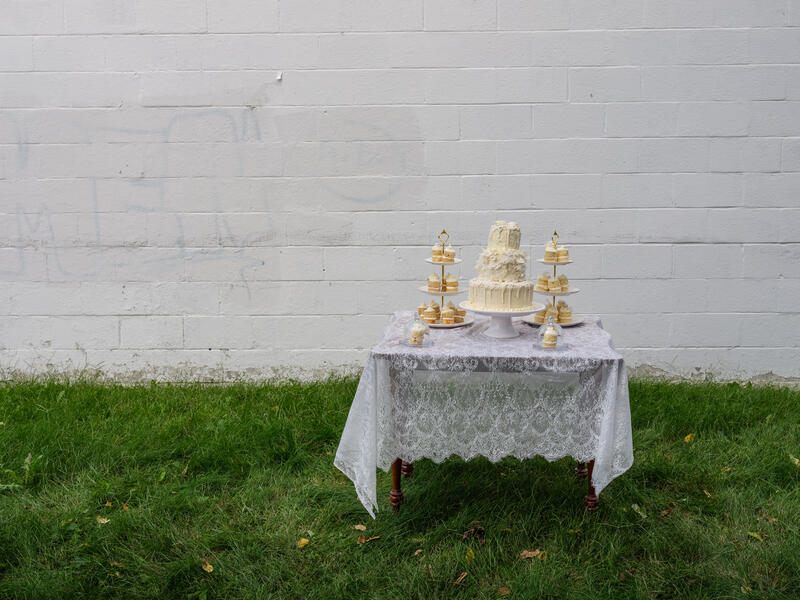 Let Them Eat Cake (3)
Let Them Eat Cake (3)Let Them Eat Cake - Live Performance Documentation (photographed by Nate Larson)
Postpartum
-
 Self Portrait (9 months pregnant with second child)2018 36”x36” Cotton, Cord, bisque fired stoneware
Self Portrait (9 months pregnant with second child)2018 36”x36” Cotton, Cord, bisque fired stoneware -
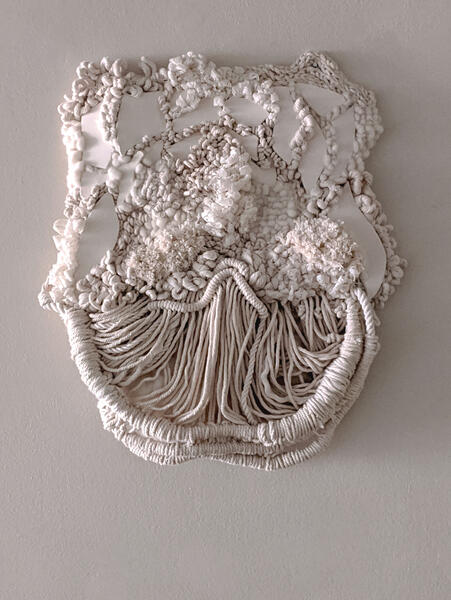 The After Party (2 months postpartum with second child))2020 18" x 24" Cotton, cord, bisque fired stoneware
The After Party (2 months postpartum with second child))2020 18" x 24" Cotton, cord, bisque fired stoneware -
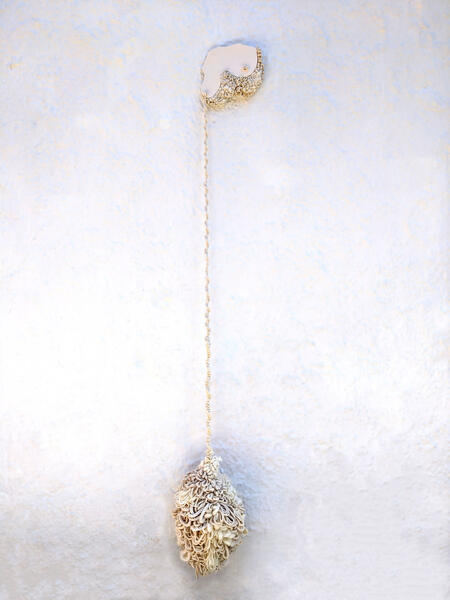 Weight-Wait2021 70" x 10" x 10" Cotton, Cord, Porcelain Feeding our children is a juxtaposition of joy, snuggles, love, hard choices, shame, and mom guilt. One of the things I associate with nursing is weight. The physical heaviness of holding a baby for hours, the weight of decisions of how/when you should feed your baby. And waiting. The many hours being still restricted in movement caring for, loving your baby. You love it. You also wish you could reach your phone/water/dinner. My artwork about motherhood is based on my personal experience, acknowledging it in no way represents the many variety of experiences and choices of the mothers I know, who follow me here, and who have come before us.
Weight-Wait2021 70" x 10" x 10" Cotton, Cord, Porcelain Feeding our children is a juxtaposition of joy, snuggles, love, hard choices, shame, and mom guilt. One of the things I associate with nursing is weight. The physical heaviness of holding a baby for hours, the weight of decisions of how/when you should feed your baby. And waiting. The many hours being still restricted in movement caring for, loving your baby. You love it. You also wish you could reach your phone/water/dinner. My artwork about motherhood is based on my personal experience, acknowledging it in no way represents the many variety of experiences and choices of the mothers I know, who follow me here, and who have come before us. -
 I Can Work on Accepting Myself2021 13" x 10" Cotton, Cord, Porcelain, Velvet, Wool, Lace These pieces embody this tension with my physical stretch marks and scars. Starting with photographs, I molded clay in the shape of my smooth skin and filled the gaps left by stretch marks with fiber that mimics their texture. On the back of the piece is a hand stitched affirmation chosen through in EMDR therapy: “I can work on accepting myself." Repeating these words and stitching them into my art has been a step in my journey of self acceptance.
I Can Work on Accepting Myself2021 13" x 10" Cotton, Cord, Porcelain, Velvet, Wool, Lace These pieces embody this tension with my physical stretch marks and scars. Starting with photographs, I molded clay in the shape of my smooth skin and filled the gaps left by stretch marks with fiber that mimics their texture. On the back of the piece is a hand stitched affirmation chosen through in EMDR therapy: “I can work on accepting myself." Repeating these words and stitching them into my art has been a step in my journey of self acceptance. -
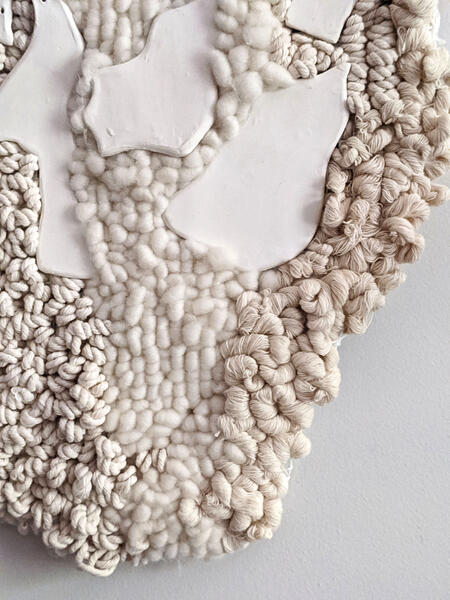 Self Portrait DetailDetail photo of Self Portrait
Self Portrait DetailDetail photo of Self Portrait
At the End of my Rope
Inspired by the persistent anxiety and fear filling my chest since early 2020, this performance piece creates a physical representation to how I felt throughout the past year and a half--the continual uncertainty, grief, loss, and tragedy. .
I begin the piece fidgeting with a rope, nervously, then I start tying knots. Each knot symbolizes the 428 days from Baltimore city’s lock down until the day I was fully vaccinated. The accumulation of the knots fills the table, my arms, and my entire chest cavity (physically and metaphorically). I then begin untying knots. I untie 86 knots symbolizing the number of days from the day I was fully vaccinated until the rise of the Delta variant changed the game once again. At this point, I start re-tying knots, more dread, more uncertainty, more fear.
The piece took me an hour. By the end, my arms were sore and heavy. I was exhausted. You can watch a timelapse of the performance here: https://www.norahowellart.com/rope
Peter Bruun who generously wrote about the piece, summed it up as, “Deceptively simple, At the End of My Rope is a tale of unfolding existential dread—her own and Ours.”
I know many of you share this feeling of existential dread.The piece will obviously not take the anxiety away but know you are not alone.
-
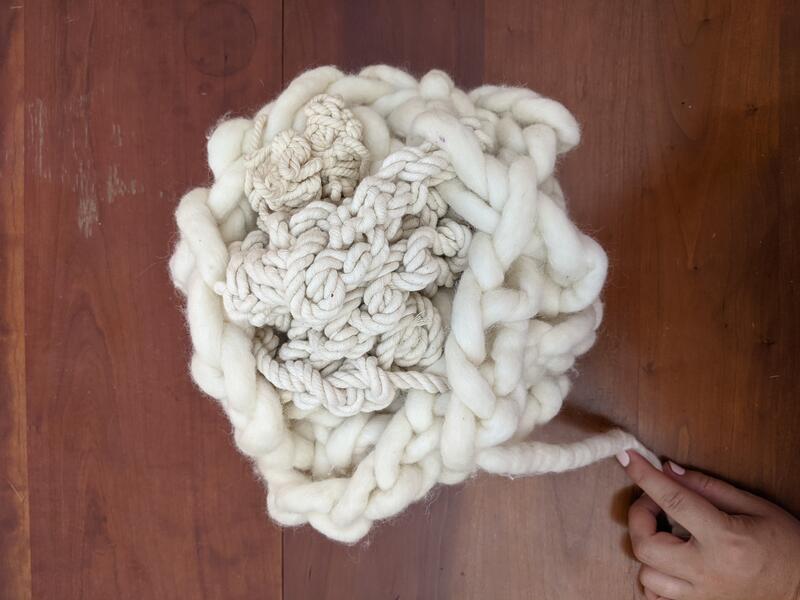 End of my Rope - Performance StillStill from End of my Rope Performance
End of my Rope - Performance StillStill from End of my Rope Performance -
100 days in a pandemic (End of my Rope - Performance Still)Still from End of my Rope Performance
-
250 days in a pandemic (End of my Rope - Performance Still)Still from At the End of my Rope performance
-
428 days in a pandemic (End of my Rope - Performance Still)Still from At the End of my Rope performance
Ontological Expansiveness
-
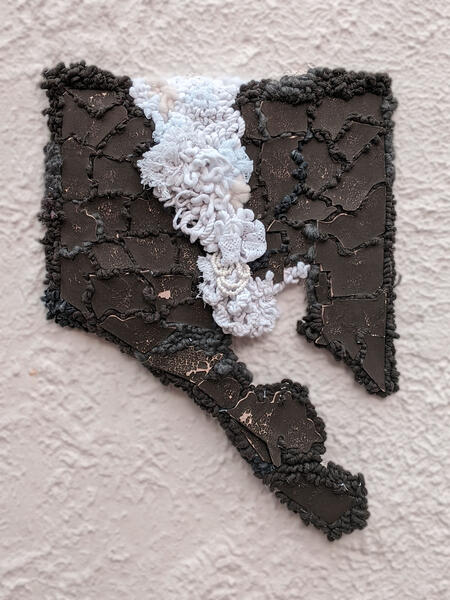 Map of Baltimore2021 14.5" x 20" Cotton, Cord, porcelain Map of Baltimore and its accompanying brand new video, "The Making of a Segregated City." The video, which is a collaboration with my sister, Junia Howell, PhD, breaks down the history of Baltimore's housing segregation and its legacy. https://www.norahowellart.com/copy-of-postpartum?pgid=kklotdby-2833384c-312b-432f-b5ae-ccb38544d284
Map of Baltimore2021 14.5" x 20" Cotton, Cord, porcelain Map of Baltimore and its accompanying brand new video, "The Making of a Segregated City." The video, which is a collaboration with my sister, Junia Howell, PhD, breaks down the history of Baltimore's housing segregation and its legacy. https://www.norahowellart.com/copy-of-postpartum?pgid=kklotdby-2833384c-312b-432f-b5ae-ccb38544d284 -
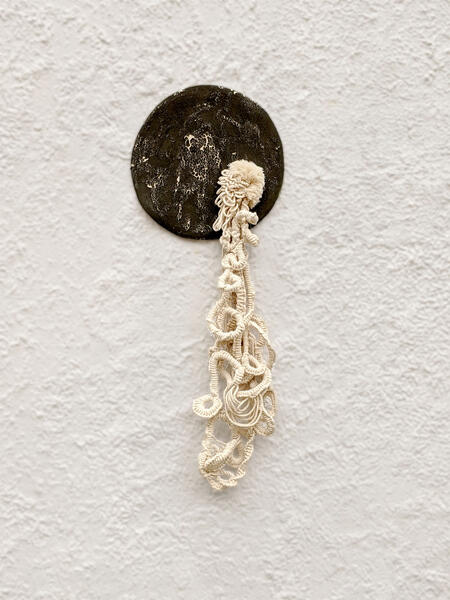 Sphere of Influence2021 13” x 35” Porcelain and Fiber Sculpture
Sphere of Influence2021 13” x 35” Porcelain and Fiber Sculpture -
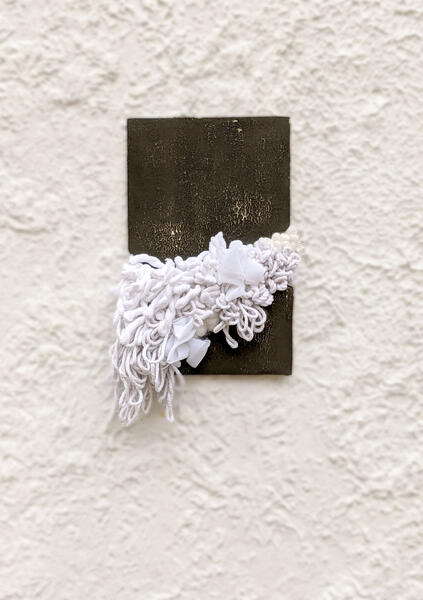 Whose Space?2020 7” x 11” Porcelain and Mixed Fiber Sculpture
Whose Space?2020 7” x 11” Porcelain and Mixed Fiber Sculpture -
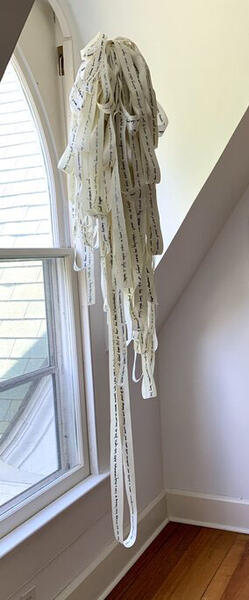 White Thoughts2020 Ribbon, paint marker - 2’x8’x2’ In the wake of the 2020 racial Uprising, I revisited my “Privileged White Thoughts (2009)” sculpture. This sculpture used journal notes from my time in college studying systemic racism to embodying my ‘White Thoughts.’ As part of revisiting this piece in 2020, I read new books about racism, whiteness, and antiracism activists. I challenged myself to once again write down my earnest reflections, experiences, and role in the system of white supremacy. My aim was to learn from my gut reactions and emotions and avoid defensiveness and denial. I documented the process on these streams of white ribbon. Detail photo of “White Thoughts” Sculpture. Photo courtesy of @stayhomegallery
White Thoughts2020 Ribbon, paint marker - 2’x8’x2’ In the wake of the 2020 racial Uprising, I revisited my “Privileged White Thoughts (2009)” sculpture. This sculpture used journal notes from my time in college studying systemic racism to embodying my ‘White Thoughts.’ As part of revisiting this piece in 2020, I read new books about racism, whiteness, and antiracism activists. I challenged myself to once again write down my earnest reflections, experiences, and role in the system of white supremacy. My aim was to learn from my gut reactions and emotions and avoid defensiveness and denial. I documented the process on these streams of white ribbon. Detail photo of “White Thoughts” Sculpture. Photo courtesy of @stayhomegallery
Whitening U
White on White and Black on White
White Girl's Birthday Suit
Many people have asked what the significance is in my use of crackers. The origin of the term cracker is disputed, but clearly seems to originate chiefly in Georgia and Florida. The term may refer to people who cracked whips over their oxen and mules taking cotton to market, or cracking corn. Although history does not leave a clear record of how the term originated, it came to signify poor whites and often illiterate emigrants from Scotland, Ireland or Germany. Bill Clinton used the term ?cracker? to refer to the white votes he was intending to win over for Barack Obama. Whatever the origin of the term, I use the cracker as a metaphor for a person with white skin, hence the name of the Cracker Dress: ?White Girl?s Birthday Suit.?
Cracker dress photographed by Natalie Tranelli

